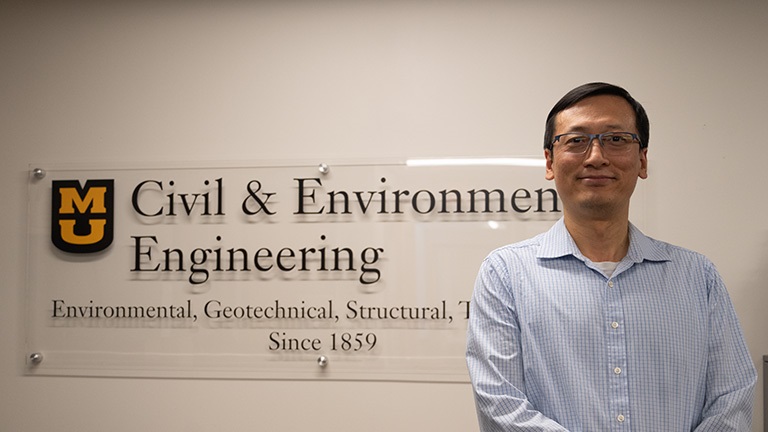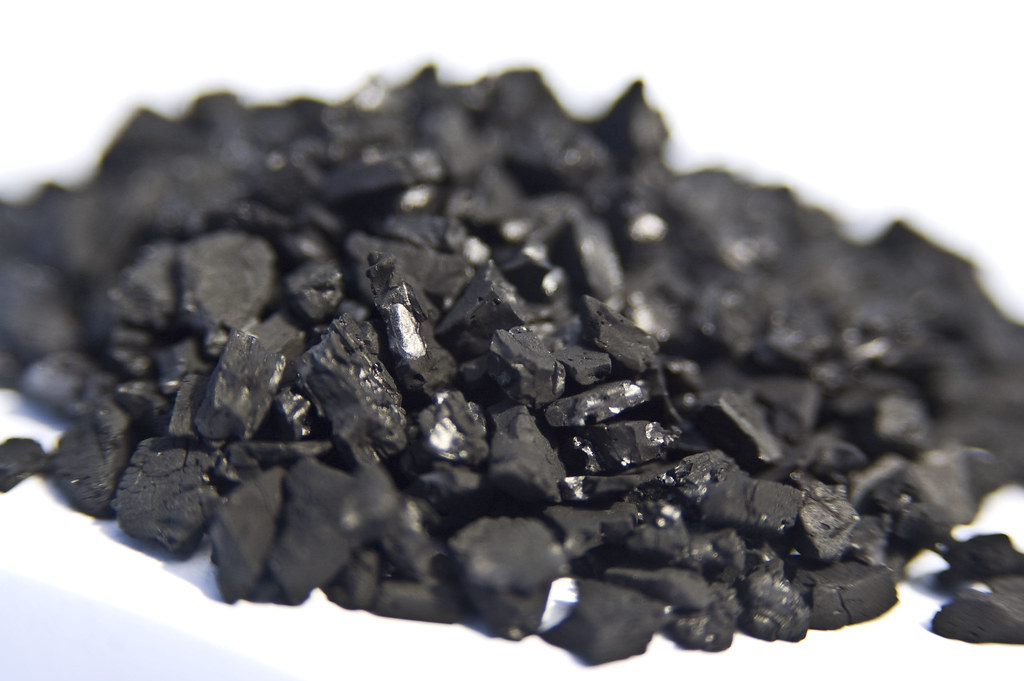January 30, 2025
The answer to removing PFAS, also known as “forever chemicals,” may be in your fishbowl.

At Mizzou Engineering, our researchers create meaningful change in Missouri and across the world. Now, one faculty member has discovered a new method to remove so-called “forever chemicals” from our drinking water.
Per- and polyfluoroalkyls (PFAS) are industrial chemicals used in the manufacture of thousands of products, including cosmetics, carpeting, non-stick cookware, stain-resistant fabrics, firefighting foams, food packaging and water-proof clothing.
They’re everywhere — the environment, our food, even in peoples’ bodies. Peer-reviewed studies have shown that exposure to PFAS may lead to decreased fertility, developmental delays in children and increased risk of some cancers. And they take hundreds or even thousands of years to break down.
For roughly the past 10 years, researchers have been looking for ways to remove PFAS from the environment or at least degrade them into harmless, inorganic compounds. Now Mizzou Engineers have found a simple solution using common tools and materials.
Feng “Frank” Xiao, an associate professor in the Department of Civil and Environmental Engineering at Mizzou, is an expert in degrading PFAS.
“You don’t need organic solvent or really high temperatures,” Xiao said. “Just heat the PFAS with granular activated carbon (GAC).”
GAC is composed of granules of coal, wood or other carbon-rich materials that have been heated. It is already commonly used to filter a wide range of harmful chemicals from contaminated water or air. Consumers use it to clean household aquariums or filter drinking water, and it can be purchased online for just a few dollars per pound.
In a paper recently published in the journal Environmental Science and Technology (ES&T), Xiao and his team describe how they heated PFAS with common GAC at 572° F. As a result, the researchers achieved 90% mineralization of the PFAS, breaking the forever chemicals down into harmless, inorganic fluorine.
Before now, reaching this level of mineralization required temperatures in excess of 1292° F, high pressure or solvents. Xiao’s method is much more cost effective and sustainable, as GAC is cheap and can be reheated again and again.
Prestigious publication
This research published in ES&T was primarily supported by the U.S. Department of Defense, the U.S. National Science Foundation (NSF) CAREER Program, and the new faculty start-up grant from MizzouForward.
Xiao joined the College in 2022-2023 as part of the MizzouForward initiative, and his NSF CAREER Award was transferred to Mizzou. Since then, he has secured several new facilities and administrative (F&A)-generating grants through competitive review processes.
ES&T is one of two journals in environmental engineering included in the Nature Index, which selectively includes certain journals (not necessarily those with the highest impact factor) in each discipline.
ES&T is widely recognized as the best journal in environmental engineering and technology, known for its low acceptance rate. Publishing in ES&T enhances the visibility of both the department and the entire college.

Practical applications for Missouri
The key to Xiao’s innovation is the combination of GAC and heat.
“Once GAC is involved, the thermal degradation of PFAS occurs much faster, and the mineralization is more intense,” Xiao said. “It’s not an expensive process, compared to reverse osmosis, and it can be done at local scale with a regular furnace.”
The discovery represents a significant breakthrough in managing PFAS-containing solid wastes, biosolids and spent adsorbent media that are major concerns to farmers and communities, including those in Missouri.
“In the Midwest, we use a lot of herbicides and give animals a lot of pharmaceuticals,” Xiao said. “These substances can contain high amounts of PFAS. Through this new removal method, we can drastically reduce the compounds’ presence in our lives.”
Xiao likes Mizzou for the opportunities he has to collaborate with other leading researchers and for the quality of the scholarship of the undergraduate and graduate students.
“I teach environmental courses, and the students really care about the environment. They care about the water quality, and they care about our ecosystem,” Xiao said.
Xiao communicates to those students his passion for practical research and the opportunities they have to create a better world through engineering.
“The real-world application of this discovery is that we can effectively and efficiently remove forever chemicals and other contaminants from our water,” he said. “This is the technology we need. It’s just up to local and state governments to pick it up.”
Want to make groundbreaking discoveries with real-world applications? Choose Mizzou Engineering!